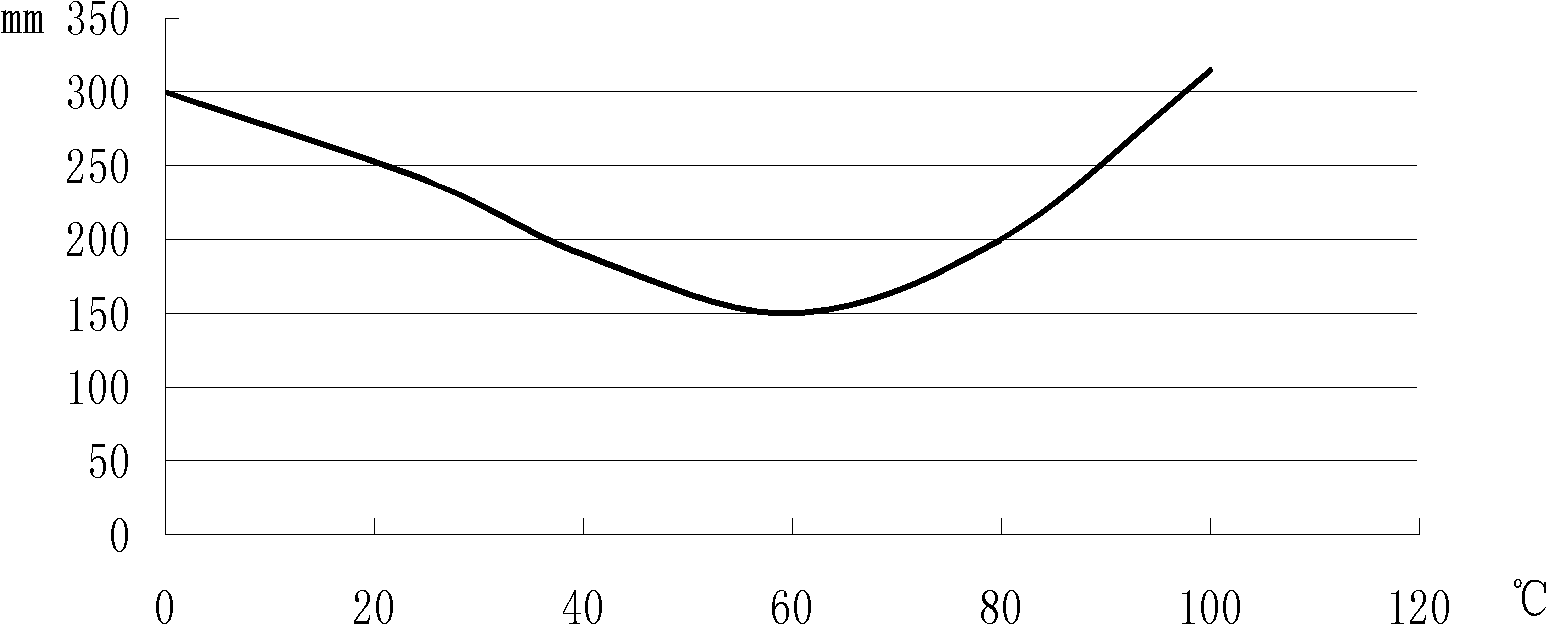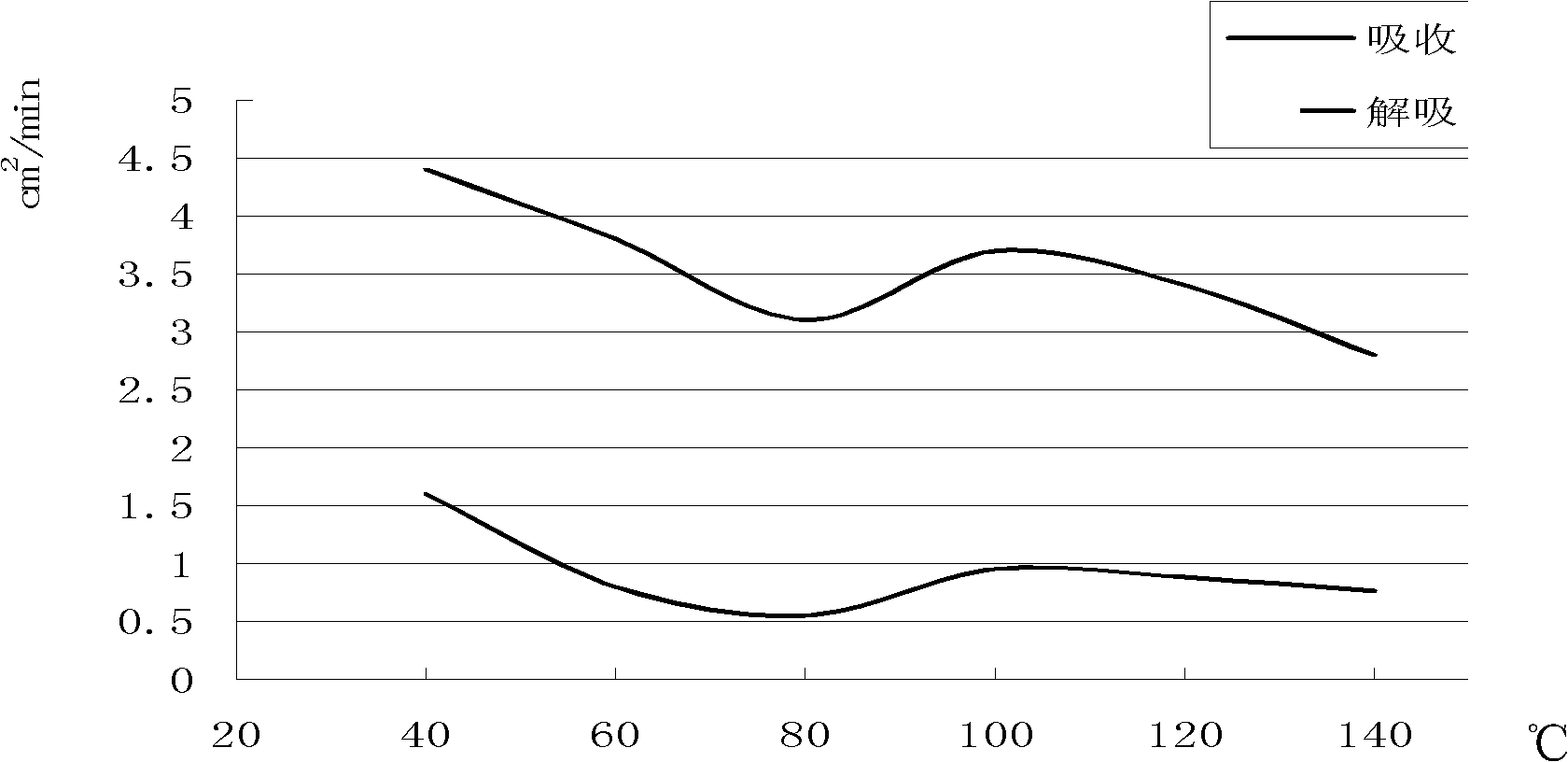Production method of preservative natural cellulose membrane
A natural cellulose and production method technology, applied in the production field of fresh-keeping natural cellulose film, can solve the problems of unsatisfactory antibacterial and other indicators of natural cellulose film, and achieve high-quality finished products, easy control, and mild reaction conditions Effect
- Summary
- Abstract
- Description
- Claims
- Application Information
AI Technical Summary
Problems solved by technology
Method used
Image
Examples
Embodiment 1
[0118] a, the preparation of cellulose viscose
[0119] Put 350 kg of cotton pulp into 3500 liters of 18% sodium hydroxide aqueous solution by mass percentage, and soak at 60° C. for 20 minutes to obtain an impregnation solution of alkali cellulose.
[0120] After adding 10 grams of pressing aid (Visco 44) in the soaking liquid, utilize a squeezing machine to press the soaking liquid to remove excess lye, and the pressing pressure is 0.095Mpa, and pressing is until the mass percentage of methylcellulose in the alkali cellulose is 32%, hydrogen Sodium oxide content is 17% (mass percentage).
[0121] The pressed alkali cellulose is pulverized into a fine loose crumb state of 1140KG, the particle size is below 0.5mm, and the pulverized alkali cellulose is obtained. Put the pulverized alkali cellulose at 70°C for 2 hours to age.
[0122] Add the aged alkali cellulose to 10% sodium hydroxide aqueous solution and soak for 35 minutes for pre-alkalinization, and then pass it into CS...
Embodiment 2
[0149] Except that the mass ratio of chitin viscose in the viscose mixture was increased from 5% to 10%, the rest of the operations were the same as in Example 1 to obtain a fresh-keeping natural cellulose film product.
[0150] The slipperiness of the finished fresh-keeping natural cellulose film has been greatly improved, the coefficient of friction is 0.24 statically, 0.20 dynamically (testing method: ASTMD 1894), and the anti-sticking property is 72% RH (national standard).
[0151] Final product tested:
[0152] Moisture in finished natural cellulose film: 8.1%;
[0153] Longitudinal tensile strength: 38N / 15mm;
[0154] Transverse tensile strength: 19N / 15mm;
[0155] Longitudinal elongation: 17.8%;
[0156] Transverse elongation: 31%;
[0157] Vertical and horizontal average tearing degree: 2.5N.m 2 / g;
[0158] Oxygen permeability 2.6cc / m 2 .24hrs (test method: ASTMD 1927 test condition: 23°C 0% RH);
[0159] Slip: friction coefficient static 0.24, dynamic 0.20 (...
Embodiment 3
[0163] Except that the mass ratio of chitin viscose in the viscose mixture was increased from 10% to 20%, the rest of the operations were the same as in Example 1 to obtain a fresh-keeping natural cellulose film product.
[0164] The finished fresh-keeping type natural cellulose film has 10 Escherichia coli (units / 100g) after detection.
[0165] Final product: fresh-keeping natural cellulose film finished product after testing:
[0166] Moisture in finished natural cellulose film: 8.2%;
[0167] Longitudinal tensile strength: 40N / 15mm;
[0168] Transverse tensile strength: 21N / 15mm;
[0169] Longitudinal elongation: 18.6%;
[0170] Transverse elongation: 30%;
[0171] Vertical and horizontal average tearing degree: 2.9N.m 2 / g;
[0172] Oxygen permeability 2.8cc / m 2 .24hrs (test method: ASTMD 1927 test condition: 23°C 0% RH);
[0173] Slip: friction coefficient static 0.23, dynamic 0.19 (testing method: ASTMD 1894), anti-adhesive 73% RH (national standard);
[0174] T...
PUM
| Property | Measurement | Unit |
|---|---|---|
| Longitudinal tensile strength | aaaaa | aaaaa |
| Transverse tensile strength | aaaaa | aaaaa |
| Longitudinal tensile strength | aaaaa | aaaaa |
Abstract
Description
Claims
Application Information
 Login to View More
Login to View More - R&D
- Intellectual Property
- Life Sciences
- Materials
- Tech Scout
- Unparalleled Data Quality
- Higher Quality Content
- 60% Fewer Hallucinations
Browse by: Latest US Patents, China's latest patents, Technical Efficacy Thesaurus, Application Domain, Technology Topic, Popular Technical Reports.
© 2025 PatSnap. All rights reserved.Legal|Privacy policy|Modern Slavery Act Transparency Statement|Sitemap|About US| Contact US: help@patsnap.com


